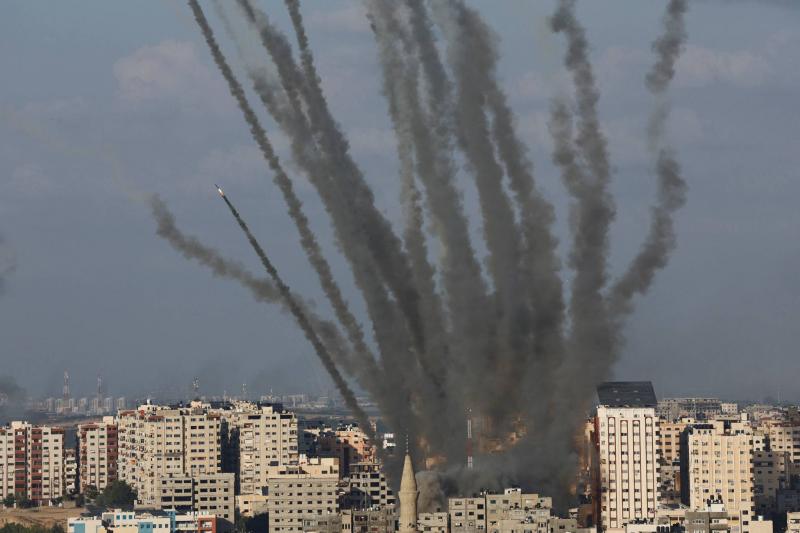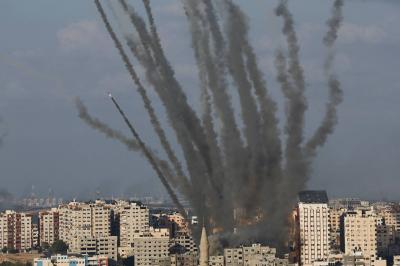The war between Israel and the Palestinian Islamic Resistance Movement (Hamas) erupted in October, marking the latest chapter in a seven-decade-long conflict between Israelis and Palestinians that has destabilized the Middle East. Hamas launched a surprise cross-border attack into Israeli territory on October 7, prompting Israel to respond with intense air and ground assaults on the Gaza Strip, stating that its goal is to eliminate Hamas.
What is the Origin of the Conflict?
The intractable conflict juxtaposes Israeli security demands in a region it has long considered hostile against Palestinian aspirations for statehood. The United Nations General Assembly approved a plan in 1947 to partition Palestine into Arab and Jewish states and impose international governance on Jerusalem. Jewish leaders accepted the plan, which allotted them 56% of Palestinian territory, while the Arab League rejected it. The founding father of Israel, David Ben-Gurion, proclaimed the modern State of Israel on May 14, 1948, establishing a safe haven for Jews escaping persecution and wishing to create a national homeland in land they claim deep historical connections to. However, violence escalated between Jews and Arabs, leading to an attack by forces from five Arab countries on Israel just one day after its establishment.
Following the declaration of the State of Israel, approximately 700,000 Palestinians, half of the Arab population in then British-mandate Palestine, fled or were expelled from their homes, eventually settling in Jordan, Lebanon, Syria, and also in Gaza, the West Bank, and East Jerusalem. Palestinians refer to the establishment of Israel as Nakba, which led to the mass dispossession of their properties and dashed their hopes of statehood.
Fighting ceased with armistice agreements in 1949, but there was no formal peace. Today, Palestinians who remained after the war and their descendants constitute about 20% of Israel's population.
What Major Wars Have Occurred Since Then?
In 1967, Israel launched a pre-emptive strike against Egypt and Syria, starting the Six-Day War, during which it captured the West Bank, East Jerusalem from Jordan, the Golan Heights from Syria, and the Gaza Strip from Egypt, and has occupied those territories ever since. An Israeli population census that year estimated the population of Gaza at 394,000, with at least 60% being Palestinian refugees and their descendants. On October 6, 1973, Egypt and Syria launched a surprise attack on Israeli positions along the Suez Canal and Golan Heights, but Israel pushed both armies back within three weeks. Israel invaded Lebanon in 1982, and thousands of Palestinian fighters led by Yasser Arafat were evacuated by sea after a ten-week siege. Israeli forces withdrew from Lebanon in 2000.
In 2005, Israel unilaterally withdrew settlers and soldiers from Gaza, a territory it had taken control of from Egypt in 1967. Hamas won parliamentary elections in 2006 and took control of Gaza in 2007. Gaza has since witnessed significant escalations in fighting between Palestinian militants and Israel in the years 2006, 2008, 2012, 2014, and 2021. In 2006, Hezbollah militants captured two Israeli soldiers in the turbulent border region, leading Israel to initiate a military operation that resulted in a six-week war. In addition to wars, there were two Palestinian uprisings, known as intifadas, occurring between 1987-1993 and 2000-2005. The second intifada saw waves of suicide bombings perpetrated by Hamas against Israelis, alongside Israeli aerial and artillery bombardments of Palestinian cities.
Since then, numerous rounds of hostilities have erupted between Israel and Hamas, which refuses to recognize Israel and is labeled a terrorist organization by Israel, the U.S., the EU, and others. Hamas claims its military activities are resistance against Israeli occupation.
What Peace Attempts Have Been Made?
In 1979, Egypt and Israel signed a peace treaty that ended 30 years of hostilities. In 1993, Israeli Prime Minister Yitzhak Rabin and Yasser Arafat, leader of the Palestine Liberation Organization, shook hands in the context of the Oslo Accords, which granted Palestinians limited self-governance. In 1994, Israel signed a peace treaty with Jordan. President Bill Clinton, Israeli Prime Minister Ehud Barak, and Arafat participated in the Camp David summit in 2000, but they were unable to reach a final peace agreement. In 2002, the Arab League proposed a plan to Israel for establishing normal relations with all Arab countries in exchange for a complete withdrawal from territories seized in the 1967 war, the establishment of a Palestinian state, and a "just solution" for Palestinian refugees. However, a bombing by Hamas of an Israeli hotel crowded with Holocaust survivors during Passover overshadowed this plan. Other peace efforts have stalled since 2014, when talks between Israelis and Palestinians in Washington failed. The Palestinians refused to engage with the administration of former U.S. President Donald Trump from 2017 to 2021 when it reversed decades-long U.S. policy by recognizing Jerusalem as Israel's capital. The Palestinians seek to establish an independent state with East Jerusalem as its capital.
Qatar and Egypt are playing mediating roles in the latest conflict, successfully brokering a seven-day ceasefire during which hostages held by Hamas were exchanged for prisoners held by Israel, and more humanitarian aid flowed into Gaza.
What Is the Current State of Peace Efforts?
The administration of President Joe Biden has focused on trying to reach a "grand deal" in the Middle East that includes normalizing relations between Israel and Saudi Arabia. The ongoing war has created diplomatic challenges for Riyadh and other neighboring Arab states in the Gulf that signed peace agreements with Israel.
What Are the Main Israeli-Palestinian Issues?
At the heart of the conflict lie key issues of a two-state solution, Israeli settlements in occupied territories, the status of Jerusalem, agreed borders, and the fate of Palestinian refugees. The two-state solution envisions an agreement that establishes a state for Palestinians in the West Bank and Gaza Strip alongside Israel. Israel insists that any Palestinian state must be demilitarized to avoid threatening its security. Most countries consider Jewish settlements in lands occupied by Israel in 1967 illegal, while Israel disputes this, citing deep historical and biblical ties to these lands. Continuous settlement expansion is one of the most contentious issues between Israel, the Palestinians, and the international community.
Regarding Jerusalem, Palestinians want East Jerusalem, which contains sites of religious significance to Muslims, Jews, and Christians, to be the capital of their state. Israel claims that Jerusalem should remain its "eternal and indivisible" capital. Israel's claim to East Jerusalem is not recognized internationally. Trump acknowledged Jerusalem as Israel's capital without delineating its jurisdiction in the contested city, and he moved the U.S. embassy there in 2018. As for refugees, around 5.6 million Palestinian refugees today, most descended from those who fled in 1948, live in Jordan, Lebanon, Syria, the Israeli-occupied West Bank, and Gaza. The Palestinian Foreign Ministry states that about half of registered refugees remain stateless and many live in overcrowded camps. Palestinians have long demanded the right for refugees and their millions of descendants to return, while Israel asserts that any resettlement of Palestinian refugees must occur outside its borders.




